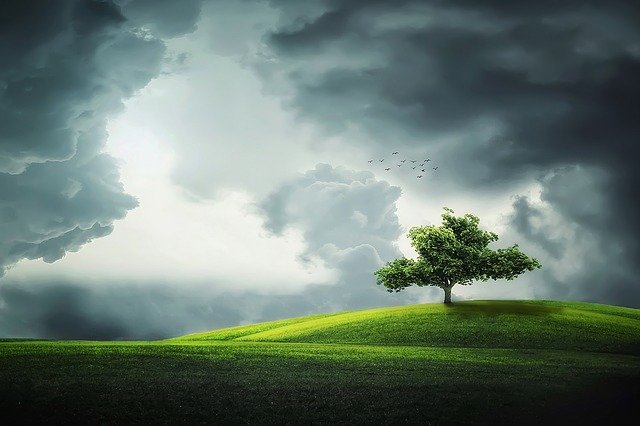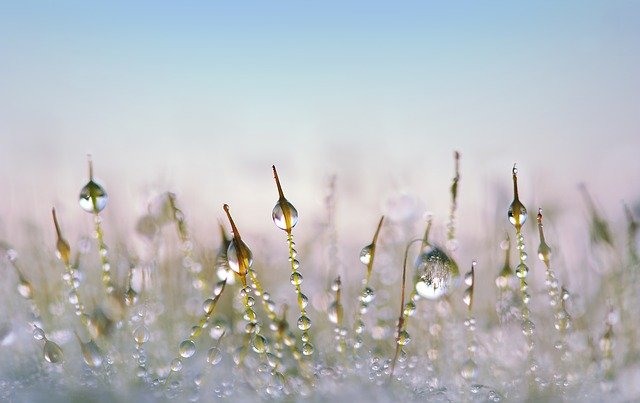Jason Silva maintains that whatever we find that is awe-inspiring extends our “perceptual frameworks” , expands our comfort zones and builds compassion and creativity. When we experience wonder and awe, our “mental maps” are challenged and our mind is expanded to accommodate “land beyond the maps” that we have in our head. We encounter boundarylessness, mystery, and the majesty of creation. Through his Shots of Awe video podcasts, he encourages us to move beyond the “banality” and disengagement of our lives, to open to emotional and aesthetic experiences and to awaken to awe. He suggests that, in the final analysis, we have a “responsibility to awe”. Jason offers ways to understand and develop awe through his free video, Find Your Awe.
Developing awe through nature
Louie Schwartzberg, time-lapse photographer and filmmaker, presented a TEDx Talk that focused on Wonder, awe and the intelligence of nature. Louie explains that he often makes the invisible visible through his slow motion photography. He opens us up to a sense of awe in the light of the ineffable beauty, power and interconnectedness of nature. He maintains that nature takes us beyond ourself and our limited, self-absorbed focus and develops gratitude, compassion and wellness. He argues that our sense of awe and wonder is heightened when we develop an intimate relationship with nature.
Louie, through his awe-inspiring, time-lapse photography, brings us visual sources of wonder by capturing the beauty, intricacy, expansiveness and grandeur of nature. His photography unearths the incredible cooperation and coordination between plants and trees and the mind-boggling cycle of life. He captures in slowed-motion the pollination of plants by birds, bees and bats; the development and emergence of fruit (such as strawberries); and the incredible internet-like network of fungi beneath the earth (captured in Louie’s film, Fantastic Fungi). The wonder and awe experienced by people viewing his photography is clearly illustrated on the faces of people seeing his time-lapse photography projected onto St. Peter’s Basilica in the Vatican.
Developing awe through sound and sight
Louie captures other sources of awe through his Wonder and Awe Podcast. Some of these podcasts focus on auditory sources of wonder and awe, e.g., the wonderful compositions and singing of Lisbeth Scott; the soaring, healing sounds of violinist Lindsey Stirling; and the productions of Cosmo Sheldrake, musician and composer, who reinforces the “power of sound in nature”.
Rebecca Elson, dedicated poet and astronomer, left a legacy not only of scientific discoveries but also her poems and personal notes/musings captured in her book, A Responsibility to Awe. One of her poems, Antidotes to Fear of Death, is shared publicly through readings by different people and captured visually by the accompanying deep space photography of Scott Denning.
Louie also interviewed Anna Bjurstam as part of his series of podcasts and explored energy science beyond the immediate realm of visibility. Anna is a pioneer of wellness through Six Senses Spas of which she is Vice-President. These luxury resorts stimulate the senses through the incredible beauty of nature and experiences that are meaningful, empathetic and enhance well-being. Anna mentioned her near-death experience which led her to understand “how beautiful, amazing and what a gift this life is”.
Reflection
Jon Kabat-Zinn encourages us to develop wonder and awe through our senses. His book Coming to Our Senses, e.g., ways to fully enjoy our “tastescape”, “touchscape” or “soundscape”. He suggests that mindfulness meditation creates the doorway to be consciously in the present moment in a non-judgmental and open way.
Being curious about what we are experiencing in all its dimensions opens the way to develop wonder and awe in our lives. As we grow in mindfulness, we become more aware, increasingly focused on the present, and more attuned to nature and the world around us. Jason Silva maintains that we often forgo the present for the future and we need to reverse this tendency if we are to awaken to wonder and awe.
_______________________________________
By Ron Passfield – Copyright (Creative Commons license, Attribution–Non Commercial–No Derivatives)
Disclosure: If you purchase a product through this site, I may earn a commission which will help to pay for the site, the associated Meetup group, and the resources to support the blog.


